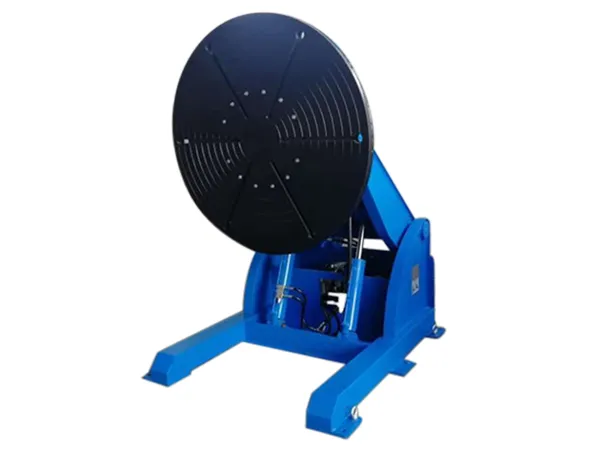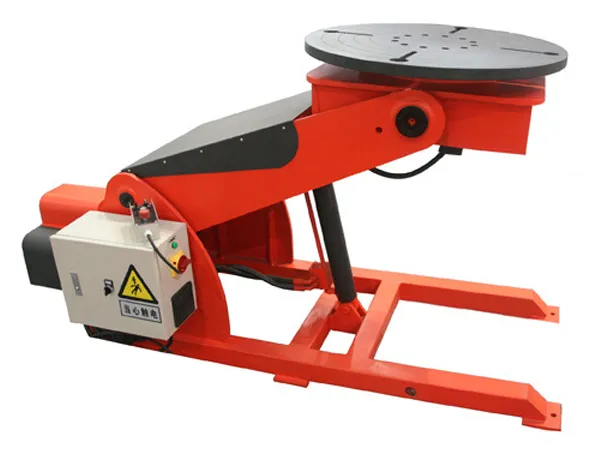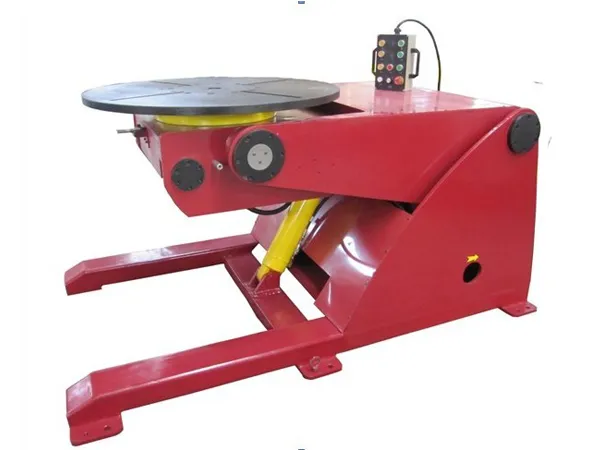A welding positioner is an indispensable tool in modern fabrication, allowing operators to achieve consistent weld quality, better ergonomics, and higher productivity. To keep this equipment running smoothly, regular maintenance and timely troubleshooting are critical. Without proper care, welding positioners may experience unexpected failures, costly repairs, and reduced operational efficiency.

This guide offers practical maintenance strategies and troubleshooting tips to help extend the lifespan of your welding positioner and ensure stable, high-precision performance.
During daily welding operations, dust, metal spatter, and fumes tend to accumulate on the rotating table and mechanical components. This buildup can restrict movement and increase wear.
Recommended actions:
Clean the table surface, gears, and fixtures regularly to prevent debris interference.
Follow the manufacturer’s lubrication schedule for bearings, gears, shafts, and pivot points.
Use proper industrial lubricants to minimize friction and extend component life.
Consistent cleaning and lubrication can significantly improve rotation smoothness and operational reliability.
Electrical instability is a common cause of rotation inconsistency or sudden stops.
Inspection checklist:
Examine wiring connections for looseness, corrosion, or damage.
Test the control panel and foot pedal for responsiveness.
Check limit switches and emergency-stop buttons to ensure they function correctly.
Replace any damaged electrical parts before they compromise the entire system.
Performing routine electrical checks helps prevent unplanned downtime and ensures safer operation.
A welding positioner must operate within its designed load limit to avoid mechanical strain.
Key recommendations:
Confirm that the workpiece weight does not exceed the rated capacity.
Ensure fixtures and clamping tools are securely mounted.
Check the alignment of the table, tilt mechanism, and rotating axis to maintain welding accuracy.
Misalignment can lead to uneven weld beads, reduced precision, and potential safety risks.
Proper load management and alignment directly influence welding quality and equipment durability.

Even with proper maintenance, occasional problems may occur. Below are typical issues and quick solutions:
Table rotation is jerky or uneven
Remove accumulated debris from moving parts.
Inspect bearings for wear and apply fresh lubrication.
Positioner stops or pauses during operation
Check power supply stability.
Tighten any loose electrical connections.
Inspect internal control circuits for faulty components.
Unusual noise or vibration
Examine motor gears for wear or misalignment.
Confirm that all mechanical parts are properly lubricated.
Tighten loose bolts or fixtures.
Addressing these issues early prevents minor defects from escalating into major mechanical failures.
A structured maintenance log is essential for long-term performance monitoring.
Include records of:
Cleaning and lubrication schedules
Electrical system inspections
Component replacements
Troubleshooting notes
Routine servicing dates
This documentation allows technicians to identify recurring issues and optimize future maintenance planning.

FAQ 1: How often should a welding positioner be maintained?
A welding positioner should be inspected and cleaned weekly during heavy use. Lubrication and electrical checks can be performed monthly or according to the manufacturer's recommendations.
FAQ 2: Why is my welding positioner rotating unevenly?
Uneven rotation is commonly caused by debris buildup, worn bearings, or insufficient lubrication. Cleaning and re-lubricating the moving components usually resolves the issue.
FAQ 3: What causes a welding positioner to stop unexpectedly?
Sudden stops may indicate a loose electrical connection, faulty control circuit, or overload. Inspect power supply stability and control components for defects.
FAQ 4: How can I extend the lifespan of my welding positioner?
Regular cleaning, proper lubrication, load management, alignment checks, and keeping a maintenance log are key to extending equipment lifespan.
FAQ 5: Can overloading damage a welding positioner?
Yes. Overloading can stress the motor, gears, and rotation table, leading to premature failure. Always operate within the manufacturer’s specified load capacity.
Conclusion
Proper welding positioner maintenance is crucial for ensuring stable operation, better welding precision, and longer service life. By implementing regular cleaning, electrical inspections, load verification, and timely troubleshooting, fabrication shops can minimize downtime and maintain consistent productivity. Investing in routine care ultimately leads to higher-quality welds and improved overall efficiency in your welding processes.
How to Choose the Right Welding Positioner for Your Factory
No information
No. 1 Intersection of Chuangye Avenue and Weilai Avenue,
Yiyang County,Luoyang City, Henan Province, China
+86 400-0379-069
Copyright © 2023 An Automated Welding and Cutting Equipment Manufacturer Focusing on Welding Column Boom and Welding Rotator | All Rights Reserved Technical support: ShangXian